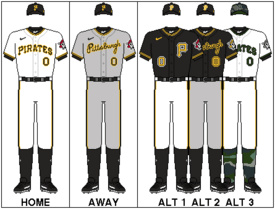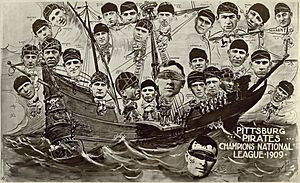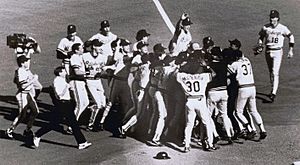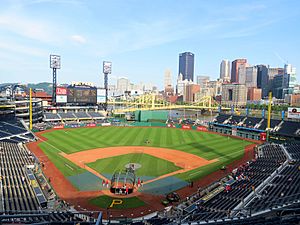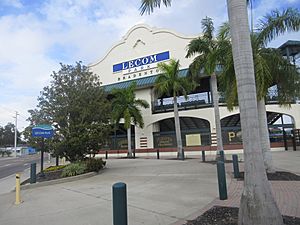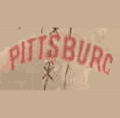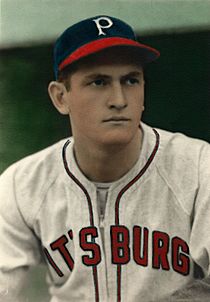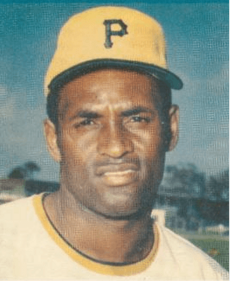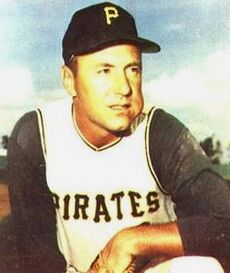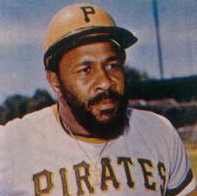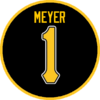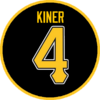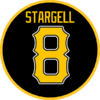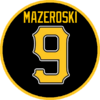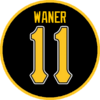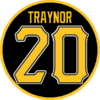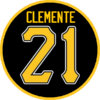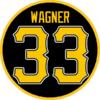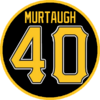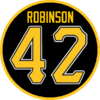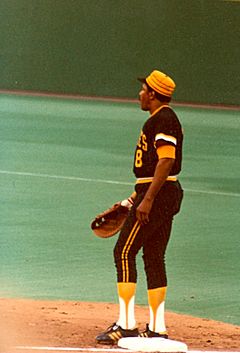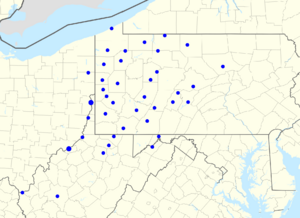Pittsburgh Pirates facts for kids
Quick facts for kids Pittsburgh Pirates |
|||||
|---|---|---|---|---|---|
|
|||||
|
|||||
| Major league affiliations | |||||
|
|||||
| Current uniform | |||||
| Retired numbers | |||||
| Colors | |||||
|
|||||
| Name | |||||
|
|||||
| Other nicknames | |||||
|
|||||
| Ballpark | |||||
|
|||||
| Major league titles | |||||
| World Series titles (5) |
|
||||
| NL Pennants (9) |
|
||||
| NL Central Division titles (0) | None | ||||
| NL East Division titles (9) |
|
||||
| Wild card berths (3) |
|
||||
| Front office | |||||
| Principal owner(s) | Bob Nutting | ||||
| President | Travis Williams | ||||
| General manager | Ben Cherington | ||||
| Manager | Don Kelly | ||||
| Mascot(s) | Pirate Parrot | ||||
The Pittsburgh Pirates are a professional baseball team from Pittsburgh, Pennsylvania. They play in Major League Baseball (MLB) as part of the National League (NL) Central Division.
The team started in 1881 as the Allegheny Base Ball Club. They joined the National League in 1887. The Pirates have won five World Series championships. They also won nine National League pennants and nine division titles. They have played in the Wild Card Game three times.
The Pirates were one of the best teams in the early 1900s. They played in the first World Series in 1903. They won their first championship in 1909 with star player Honus Wagner. The Pirates won the 1960 World Series in a very famous way. Bill Mazeroski hit a walk-off home run to win Game 7 against the New York Yankees. This is the only time a World Series Game 7 has ended with a home run.
They won again in 1971 with Roberto Clemente. He was the first Latin-American player in the National Baseball Hall of Fame. In 1979, they won another World Series led by Willie Stargell.
Since 1979, the Pirates have had a tough time. They had a losing record for 20 seasons in a row, from 1993 to 2012. This was a record for MLB and other major North American sports. They have the fifth-longest World Series championship drought. They also have the longest pennant drought in the National League. From 1882 to 2024, their overall record is 10,839 wins, 10,819 losses, and 140 ties.
The team is often called the "Bucs" or "Buccos." These nicknames come from the word "buccaneer," which means pirate. Since 2001, the Pirates have played their home games at PNC Park. It is a stadium for 39,000 fans along the Allegheny River in Pittsburgh. Before that, they played at Forbes Field (1909–1970) and Three Rivers Stadium (1970–2000). Since 1948, their team colors have been black, gold, and white. These colors come from the flag of Pittsburgh. They match the colors of other Pittsburgh sports teams, like the Pittsburgh Steelers and the Pittsburgh Penguins.
Contents
- Team History: How the Pirates Began
- PNC Park: The Pirates' Home Field
- Logos and Uniforms: A Changing Look
- Team Rivalries
- Team Roster
- Players of Note
- Franchise Records: Top Performances
- Minor League Teams
- Civil Rights Advocacy: Leading the Way
- Fanbase: Pittsburgh's Baseball Team
- Community Activities: Giving Back
- Media: How to Watch and Listen
- See also
Team History: How the Pirates Began
Professional baseball started in Pittsburgh in 1876. The first team was the Allegheny Base Ball Club. They were based in Allegheny City, which is now part of Pittsburgh. In 1882, a new Allegheny club started playing in the American Association. People sometimes called them the "Alleghenys." In 1887, Pittsburgh became the first team from the American Association to join the older National League.
Before the 1890 season, many of the Alleghenys' best players left for another league. When that league ended, players could return to their old teams. The Alleghenys also signed a player named Lou Bierbauer. He had played for another team, the Philadelphia Athletics. The Athletics were upset because they felt Bierbauer should have been on their team. An official from the American Association said the Alleghenys' signing of Bierbauer was "piratical." This led to the team being called the "Pirates" by newspapers. The nickname stuck, and by 1891, it was common. The team's uniforms first showed the nickname in 1912.
Early Success and First World Series Win
The Pirates started to get much better around 1900. They gained star players like Honus Wagner, who later became a Hall of Famer. The Pirates were one of the best teams in the early 1900s. They won the National League pennant three years in a row (1901–1903). They played in the first modern World Series in 1903, but they lost.
In 1909, the Pirates returned to the World Series. They beat the Detroit Tigers to win their first world title. That year, the Pirates moved to Forbes Field, one of the first ballparks made of steel and concrete.
The 1920s and Beyond
As Honus Wagner got older, the Pirates had some tougher years in the 1910s. But new players like Max Carey, Pie Traynor, and Kiki Cuyler helped the team improve in the 1920s. The Pirates won their second championship in 1925. They were the first team to win the World Series after being down 3 games to 1. They went back to the World Series in 1927 but lost to the powerful Murderer's Row Yankees. The Pirates were a good team in the 1930s but did not win another pennant.
The 1940s and early 1950s were not great for the Pirates. But in 1960, they returned to the World Series. They beat the Yankees in Game 7 with Bill Mazeroski's famous walk-off home run. This was a huge moment in baseball history.
The Clemente Era and "The Lumber Company"
Led by star right fielder Roberto Clemente, the Pirates were strong in the 1960s. They won the World Series again in 1971. They played in their new home, Three Rivers Stadium. They beat the Baltimore Orioles. On September 1, 1971, the Pirates made history. They were the first team to have a starting lineup made up entirely of Black and Latino players.
Even after Clemente's death in 1972, the Pirates remained a top team. They won the National League East division title many times in the 1970s. With powerful hitters like Willie Stargell, Dave Parker, and Al Oliver, the team was called "The Lumber Company." In 1979, led by Stargell and their theme song "We Are Family," the Pirates came back from a 3-1 deficit. They beat the Orioles to win their fifth championship. In 1979, Willie Stargell won the MVP award for the All-Star Game, NLCS, World Series, and National League.
Recent Years and New Stadium
The Pirates struggled in the 1980s. But in the early 1990s, young stars like Barry Bonds, Bobby Bonilla, and Doug Drabek brought them back to the postseason. They won three division titles in a row from 1990 to 1992. However, they lost in the National League Championship Series each time. Many of their best players left after the 1992 season.
The Pirates then had a tough time keeping up with other teams' salaries. They had a losing record for 20 seasons in a row. This streak ended in 2013. Even with a new stadium, PNC Park, in 2001, their luck didn't change right away. The Pirates finally returned to the postseason in 2013. They beat the Cincinnati Reds in the Wild Card Game. They lost in the next round to the St. Louis Cardinals. In 2013, the Pirates also reached 10,000 all-time wins. They returned to the postseason in 2014 and 2015 but lost the Wild Card game both times.
PNC Park: The Pirates' Home Field
Since 2001, the Pirates have played their home games at PNC Park. It is located by the Allegheny River in Pittsburgh. The park replaced Three Rivers Stadium, which was older and not designed just for baseball. PNC Park cost $216 million to build. It is named after PNC Financial Services. The stadium can hold 38,747 fans for baseball games. The largest crowd was 40,889 fans in 2015.
Many people think PNC Park is one of the best baseball stadiums. It is praised for its location, design, and views of the field and Pittsburgh skyline. It was the first two-deck ballpark built in the U.S. since 1953. This means fans in the upper deck are closer to the action. The highest seat is 88 feet above the field. Fans in the lower deck are also very close.
PNC Park is known as a "pitcher's park." This means it's harder to hit home runs there. The left field is very deep, over 410 feet from home plate. The right field is closer, but the wall is 21 feet high. This wall is called the Clemente Wall, named after Roberto Clemente. Statues of Clemente, Willie Stargell, Bill Mazeroski, and Honus Wagner are at the stadium entrances. PNC Park has also hosted the 2006 MLB All-Star Game and concerts.
Fans can walk to the stadium from downtown Pittsburgh using the Clemente Bridge. They can also take the Pittsburgh Light Rail to the North Side station.
Former Ballparks: Where the Pirates Played Before
The Pirates' first home was Exposition Park. It was near where PNC Park is today. They also played at Recreation Park. The Pirates returned to Exposition Park in 1891 and stayed there until 1909. Exposition Park hosted the first modern World Series in 1903. But by 1909, it was too small.
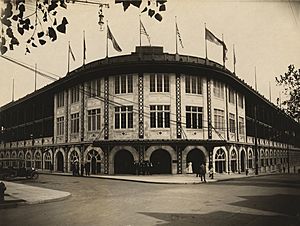
In 1909, the Pirates moved to Forbes Field in Oakland. They played there for 61 years. It cost $1 million to build and was the first three-tiered steel-and-concrete ballpark. Forbes Field was known for its large playing field. It also saw famous home runs, like Babe Ruth's last three career homers. Bill Mazeroski hit his championship-winning home run there in the 1960 World Series. The stadium was also used for football games. The Pirates left Forbes Field in 1970, and it was torn down in 1971. Parts of the outfield wall still stand today.
The Pirates moved into Three Rivers Stadium in 1970. They shared it with the Pittsburgh Steelers. This stadium was designed for both football and baseball. It had artificial turf and movable seats. By the 1990s, the Pirates wanted a new stadium just for baseball. They played their last game at Three Rivers on October 1, 2000. The stadium was torn down the next winter.
Spring Training: Getting Ready for the Season
Since 1969, the Pirates have held their Spring Training at LECOM Park in Bradenton, Florida. This park is also used by the Pirates' minor league team, the Bradenton Marauders. LECOM Park was built in 1923. It is the oldest stadium still used for Spring Training. It has been renovated twice. The park was named "McKechnie Field" for a long time. It was renamed LECOM Park in 2017. The Pirates' Spring Training complex, Pirate City, is a few miles away.
Logos and Uniforms: A Changing Look
The Pirates have changed their uniforms and logos many times. The "P" on their cap has been the most consistent part. For the first half of the 20th century, they mostly used red, white, and blue colors. Their caps were usually blue with a red or white "P." Their uniforms were simple. The name "Pirates" first appeared on uniforms in 1912. A pirate's head image was on jerseys in 1940 and 1941.
In 1948, the team switched to black and gold. These colors match the Flag of Pittsburgh. They also match the colors of the Pittsburgh Steelers and Pittsburgh Penguins. The Pirates had tried black and gold briefly in 1924.
In the late 1950s, the team started wearing sleeveless jerseys. In 1970, when they moved to Three Rivers Stadium, they changed to a darker gold. Their caps became gold with a black brim. They also introduced pullover jerseys and beltless pants. This style became popular in baseball during the 1970s and 1980s. The Pirates switched back to traditional button-down jerseys in 1991.
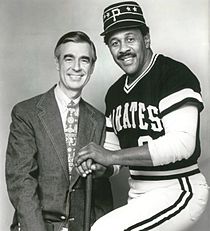
In 1976, the Pirates started wearing pillbox hats with horizontal pinstripes. They were the only team to keep these hats permanently. In 1977, they used a brighter gold color. They also became one of the first teams to wear third jerseys. The Pirates had different uniform styles, including two caps and three uniforms. They could mix and match these for different looks. In the 1979 World Series, they wore four different uniform combinations. The solid black cap with a gold "P" returned in 1987 and is still their main cap.
After 1996, the Pirates added a third jersey and used red as an accent color. From 2013 to 2019, they wore throwback uniforms for Sunday home games. These included styles from the 1970s.
Since 2015, the Pirates have worn alternate camouflage jerseys for some home games. These were updated in 2018. In 2020, the Pirates brought back the "Pittsburgh" script on their gray road and new black alternate road jerseys. The alternate road jersey also has a pirate wearing a yellow bandana.
In 2023, the Pirates stopped using the camo home alternate. They also showed off their new City Connect uniform. It has a gold top and black pants with a gold "P" cap. The jersey says "PGH" for Pittsburgh. It also has symbols representing Pittsburgh's three rivers, the "Steelmark" logo, and the city's seal.
Team Rivalries
Philadelphia Phillies: An Old Rivalry
The rivalry between the Philadelphia Phillies and the Pirates was once one of the best in the National League. It started when the Pirates joined the NL in 1887.
From 1969 to 1993, when the National League had two divisions, these two teams won the most division championships. They were often the champions of the National League East in the 1970s and early 1990s. The Pirates won nine titles, and the Phillies won six.
Since 1994, the Pirates moved to the National League Central. Now, the teams play each other less often, and the rivalry is not as strong. However, many older fans still dislike the other team.
Cincinnati Reds: A Close Matchup
The Pirates' biggest rival in their division is the Cincinnati Reds. This is because the cities are close. Also, their football teams (Steelers and Bengals) have a rivalry. The Reds and Pirates have played each other six times in the postseason. The most recent was in the 2013 National League Wild Card Game. In the 2010s, the teams often hit each other with pitches, sometimes leading to fights.
Other Divisional Rivals
From 2013 to 2015, the Pirates competed with the St. Louis Cardinals for the Central Division title. The Cardinals won the division each year. The two teams played in the 2013 National League Division Series, which the Cardinals won. The Pirates also had close games with the Milwaukee Brewers for a Wild Card spot in 2014. They played the Chicago Cubs in the 2015 National League Wild Card Game. The Cubs were also big rivals for the Pirates earlier in their history.
Interleague Play: Facing Other Leagues
The Pirates play an annual series against the Detroit Tigers. This rivalry became popular even though it was created because other teams already had rivals. It might be popular because of the rivalry between the National Hockey League's Detroit Red Wings and Pittsburgh Penguins. The two teams also have other connections. The Tigers' minor league team, the Erie SeaWolves, used to be a Pirates affiliate. Also, Jim Leyland, who managed both the Pirates and Tigers, is still popular in Pittsburgh. The Pirates and Tigers played in the 1909 World Series.
The Pirates also have an on-and-off rivalry with the Cleveland Guardians. This is because the cities are close. It also connects to the football rivalry between the Cleveland Browns and Pittsburgh Steelers. Since 2023, the teams play a three-game series each season. The Pirates lead this series 21–19.
Team Roster
|
Pittsburgh Pirates 2023 spring training roster
|
||||||
|---|---|---|---|---|---|---|
| 40-man roster | Non-roster invitees | Coaches/Other | ||||
|
Pitchers
|
Catchers
Infielders
Outfielders
|
Pitchers
Catchers
|
Manager
Coaches
Restricted list
40 active, 0 inactive, 6 non-roster invitees
|
|||
Players of Note
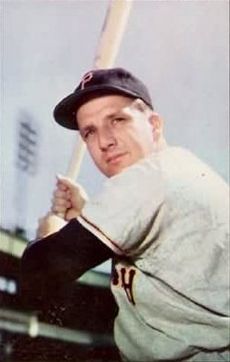
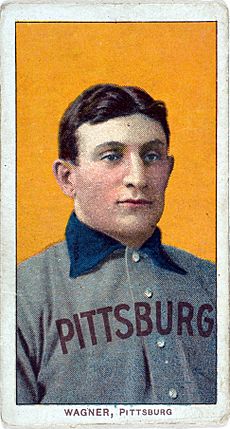
Retired Numbers: Honoring Legends
The Pirates have retired nine jersey numbers to honor their greatest players and managers. This means no other player on the team can wear that number. The number 42 is also retired across all of MLB for Jackie Robinson.
|
Baseball Hall of Famers: The Best of the Best
Many players who played for the Pirates are in the National Baseball Hall of Fame. This includes players like Roberto Clemente, Honus Wagner, and Willie Stargell.
| Pittsburgh Pirates Hall of Famers | |||||||||
|---|---|---|---|---|---|---|---|---|---|
| Affiliation according to the National Baseball Hall of Fame and Museum | |||||||||
|
Pirates Hall of Fame: Team Legends
In 2022, the Pirates started their own team Hall of Fame. It honors the most important players in Pittsburgh baseball history. The first group included all Pirates in the National Baseball Hall of Fame. It also included other players, broadcasters, and coaches. The Pirates also honored players from the Negro league baseball teams, the Homestead Grays and Pittsburgh Crawfords. These teams also played in Pittsburgh.
| Bold | Member of the Baseball Hall of Fame |
|---|---|
|
|
Member of the Baseball Hall of Fame as a Pirate |
| Bold | Recipient of the Hall of Fame's Ford C. Frick Award |
| Bold | Member of the Homestead Grays / Pittsburgh Crawfords |
| Pirates Hall of Fame | ||||
| Year | No. | Player | Position | Tenure |
|---|---|---|---|---|
| 2022 | 9 | Bill Mazeroski |
2B | 1956–1972 |
| 21 | Roberto Clemente |
RF | 1955–1972 | |
| 33 | Honus Wagner |
SS Manager Coach |
1900–1917 1917 1933–1951 |
|
| 8 | Willie Stargell |
LF 1B |
1962–1982 | |
| 21,3,5 | Arky Vaughan |
SS | 1932–1941 | |
| 4 | Ralph Kiner |
LF | 1946–1953 | |
| 20 | Pie Traynor |
3B Manager |
1920–1935, 1937 1934–1939 |
|
| Max Carey |
Outfielder | 1910–1926 | ||
| Jake Beckley |
1B | 1888–1889, 1891–1896 | ||
| Fred Clarke |
Outfielder Manager |
1900–1911, 1913–1915 1900–1915 |
||
| 41 | Paul Waner |
RF | 1926–1940 | |
| Lloyd Waner |
CF | 1927–1941, 1944–45 | ||
| 28 | Steve Blass | P Broadcaster |
1964, 1966–1974 1983-2019 |
|
| 39 | Dave Parker |
RF | 1973–1983 | |
| 40 | Danny Murtaugh | 2B Coach Manager |
1948–1951 1956–1957 1957–1964, 1967, 1970–1971, 1973–1976 |
|
| - | Josh Gibson | C | 1933–1936 1937–1946 |
|
| - | Oscar Charleston | CF / Manager | 1930–1938 | |
| - | Ray Brown | P | 1932–1945, 1947–1948 | |
| - | Buck Leonard | 1B | 1934–1950 | |
| 2023 | 26 | Roy Face | P | 1953, 1955–1968 |
| 19 | Bob Friend | P | 1951–1965 | |
| 24 | Dick Groat | SS | 1952, 1955–1962 | |
| 27 | Kent Tekulve | P | 1974–1985 | |
| 2024 | 24 | Barry Bonds | LF | 1986–1992 |
| 10 | Jim Leyland |
Manager | 1986–1996 | |
| 35 | Manny Sanguillén | C | 1967, 1969–1976, 1978–1980 | |
Awards: Recognizing Excellence
Many Pirates players and managers have won important awards.
Most Valuable Player Award
- Andrew McCutchen (2013)
- Barry Bonds (1990, 1992)
- Willie Stargell (1979)
- Dave Parker (1978)
- Roberto Clemente (1966)
- Dick Groat (1960)
- Paul Waner (1927)
Cy Young Award (Best Pitcher)
- Doug Drabek (1990)
- Vern Law (1960, MLB)
Rookie of the Year Award (Best New Player)
- Jason Bay (2004)
- Paul Skenes (2024)
Manager of the Year Award
- Clint Hurdle (2013)
- Jim Leyland (1990, 1992)
Comeback Player of the Year Award
- Francisco Liriano (2013)
- Rick Reuschel (1985)
- Willie Stargell (1978)
- Vern Law (1964)
Roberto Clemente Award (Community Service)
- Andrew McCutchen (2015)
- Willie Stargell (1974)
Team Captains
- Dick Groat -1962
- Bill Mazeroski 1963–1972
- Willie Stargell 1973–1982
- Bill Madlock 1983
Franchise Records: Top Performances
Career Batting Records
| Career batting records | ||||
|---|---|---|---|---|
| Statistic | Player | Record | Pirates career | Ref |
| Batting average | Jake Stenzel | .360 | 1892–1896 | |
| On-base percentage | Jake Stenzel | .429 | 1892–1896 | |
| Slugging percentage | Brian Giles | .591 | 1999–2003 | |
| On-base plus slugging | Brian Giles | 1.018 | 1999–2003 | |
| Runs | Honus Wagner | 1,521 | 1900–1917 | |
| Plate appearances | Honus Wagner | 10,220 | 1900–1917 | |
| At bats | Roberto Clemente | 9,454 | 1955–1972 | |
| Hits | Roberto Clemente | 3,000 | 1955–1972 | |
| Total bases | Roberto Clemente | 4,492 | 1955–1972 | |
| Singles | Roberto Clemente | 2,154 | 1955–1972 | |
| Doubles | Paul Waner | 558 | 1926–1940 | |
| Triples | Honus Wagner | 232 | 1900–1917 | |
| Home runs | Willie Stargell | 475 | 1962–1982 | |
| RBI | Willie Stargell | 1,540 | 1962–1982 | |
| Walks | Willie Stargell | 937 | 1962–1982 | |
| Strikeouts | Willie Stargell | 1,936 | 1962–1982 | |
| Stolen bases | Max Carey | 688 | 1910–1926 | |
| Games played | Roberto Clemente | 2,433 | 1955–1972 | |
Career Pitching Records
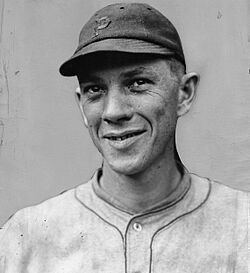
| Career pitching records | ||||
|---|---|---|---|---|
| Statistic | Player | Record | Pirates career | Ref(s) |
| Wins | Wilbur Cooper | 202 | 1912–1924 | |
| Losses | Bob Friend | 218 | 1951–1965 | |
| Win–loss percentage | Ed Doheny | .731 | 1901–1903 | |
| Earned run average | Vic Willis | 2.08 | 1906–1910 | |
| Saves | Roy Face | 188 | 1953–1968 | |
| Strikeouts | Bob Friend | 1,682 | 1951–1965 | |
| Shutouts | Babe Adams | 44 | 1907–1926 | |
| Games | Roy Face | 802 | 1953–1968 | |
| Innings pitched | Bob Friend | 3,480+1⁄3 | 1951–1965 | |
| Games started | Bob Friend | 477 | 1951–1965 | |
| Games finished | Roy Face | 547 | 1953–1968 | |
| Complete games | Wilbur Cooper | 263 | 1912–1924 | |
| Walks | Bob Friend | 869 | 1951–1965 | |
| Hits allowed | Bob Friend | 3,610 | 1951–1965 | |
| Wild pitches | Bob Veale | 90 | 1962–1972 | |
| Hit batsmen | Wilbur Cooper | 93 | 1912–1924 | |
Win–Loss Records: Highs and Lows
- 100 wins in a season
- 1902 (103–36), Fred Clarke
- 1909 (110–42), Fred Clarke
- 100 losses in a season
- 1890 (23–113), Guy Hecker
- 1917 (51–103), Jim Callahan, Honus Wagner, and Hugo Bezdek
- 1952 (42–112), Billy Meyer
- 1953 (50–104), Fred Haney
- 1954 (53–101), Fred Haney
- 1985 (57–104), Chuck Tanner
- 2001 (62–100), Lloyd McClendon
- 2010 (57–105), John Russell
- 2021 (61–101), Derek Shelton
- 2022 (62–100), Derek Shelton
Firsts in MLB: Pirates Making History
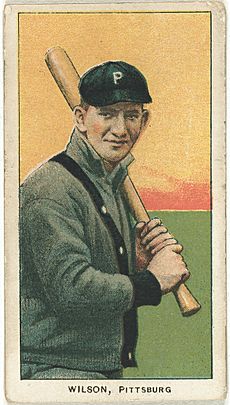
- On May 8, 1886, the Pittsburgh Alleghenys made the first 3–4–2 triple play in Major League history.
- The first ever Major League Baseball game was broadcast on the radio on August 5, 1921. It was a game between the Pirates and the Philadelphia Phillies on KDKA (AM) Pittsburgh.
- In 1925, the Pirates were the first MLB team to win a best-of-seven World Series after being down 3 games to 1. They did it again in 1979.
- During the 1953 season, the Pirates were the first team to always wear batting helmets for both offense and defense.
- The Pirates were the first team to win a World Series on a walk-off home run in Game 7 (1960).
- In 1970, the Pirates were the first major league club to use cotton-nylon blend uniforms with pull-over shirts and beltless pants.
- The first all-minority lineup in MLB history played on September 1, 1971.
- The first World Series night game was played at Three Rivers Stadium on October 13, 1971.
- The first MLB scout to win the "Scout of the Year Award" was Howie Haak in 1984.
- In November 2008, the Pirates were the first MLB team to sign players from India.
- The Pirates are the first team in professional sports to have 20 consecutive losing seasons (1993 to 2012).
- On April 6, 2015, the Pirates became the first MLB team to reach their 10,000th loss on an Opening Day.
- On May 9, 2015, the Pirates were the first MLB team to turn a 4–5–4 triple play.
- On April 24, 2017, the Pirates had the first baseball player born and raised in Lithuania to reach the major leagues, Dovydas Neverauskas.
- On April 26, 2017, the Pirates promoted Gift Ngoepe from South Africa. He was the first African-born player in MLB history.
- On August 23, 2017, the Pirates were the first team in MLB history to break up a no-hitter in extra innings with a walk-off home run.
Minor League Teams
The Pittsburgh Pirates have seven minor league teams. These teams help develop new players for the main team.
| Class | Team | League | Location | Ballpark | Affiliated |
|---|---|---|---|---|---|
| Triple-A | Indianapolis Indians | International League | Indianapolis, Indiana | Victory Field | 2005 |
| Double-A | Altoona Curve | Eastern League | Altoona, Pennsylvania | Peoples Natural Gas Field | 1999 |
| High-A | Greensboro Grasshoppers | South Atlantic League | Greensboro, North Carolina | First National Bank Field | 2019 |
| Single-A | Bradenton Marauders | Florida State League | Bradenton, Florida | LECOM Park | 2010 |
| Rookie | FCL Pirates | Florida Complex League | Pirate City Complex | 1969 | |
| DSL Pirates Black | Dominican Summer League | Boca Chica, Santo Domingo | Pirates Academy | 2018 | |
| DSL Pirates Gold |
Civil Rights Advocacy: Leading the Way
In the 1940s, Pirates owner William Benswanger supported integrating Major League Baseball. He even planned a tryout for African American players.
The Pirates were the first baseball team to have an African-American coach and manager. Gene Baker broke this barrier in 1961 and 1962. On September 21, 1963, Gene Baker became the first African-American manager in MLB history when he filled in for Danny Murtaugh.
On September 1, 1971, manager Danny Murtaugh created a starting lineup made entirely of minority players. This was a first in MLB history.
Fanbase: Pittsburgh's Baseball Team
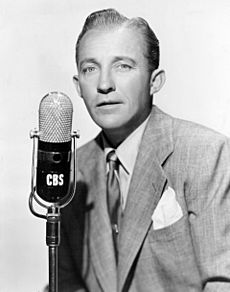
The Pirates have had famous fans, including former co-owner Bing Crosby and actor Michael Keaton. However, in Pittsburgh, the Pirates are usually less popular than the Pittsburgh Steelers (football) and Pittsburgh Penguins (hockey). This is partly because the Steelers and Penguins have won more championships recently.
Despite this, the Pirates have a strong and loyal following, especially among older residents. Their fan support grew when they ended their 20-season losing streak in 2013. The opening of PNC Park in 2001 also helped improve fan relations.
When the Penguins won the Stanley Cup in 2009 and 2017, their captain Sidney Crosby brought the cup to PNC Park. This shows the connection between Pittsburgh's sports teams.
Community Activities: Giving Back
The Pirates recognize six "Community Champions" each year. They are honored in a special ceremony before a game.
Piratefest is a yearly event held by the Pittsburgh Pirates in January. It's like a baseball carnival for families. It includes autograph sessions with players and coaches, games, and baseball clinics. The team mascot, the Pirate Parrot, also makes appearances. Piratefest is now held at PNC Park.
Media: How to Watch and Listen
Radio and TV Broadcasts
The Pirates broadcast the first ever baseball game over the radio on August 5, 1921. Harold Arlin announced the game on KDKA (AM) Pittsburgh. KDKA was the first commercially licensed radio station in the world. Regular broadcasts began in the mid-1930s. For 61 years, the Pirates were on KDKA. Its powerful signal allowed fans across eastern North America to hear games at night.
In 2007, the Pirates moved to WPGB, an FM talk radio station. This ended a very long relationship between the team and KDKA. In 2011, the Pirates moved back to CBS Radio, specifically KDKA-FM, a sports radio station. KDKA-AM now also broadcasts some games.
Pirates games are televised on SportsNet Pittsburgh. This channel has been the team's cable TV home since 1986. The Pirates became joint owners of the channel in 2023.
Announcers: The Voices of the Pirates
The Pirates do not have a fixed broadcast team. Announcers and analysts take turns working on both radio and TV. Greg Brown and Bob Walk have been with the team since 1994. Former Pirate John Wehner joined as an analyst in 2005. Joe Block became a play-by-play announcer in 2016.
Past Announcers Harold Arlin called the first radio broadcast in 1921. Rosey Rowswell became the main voice in 1936. He was joined by Bob Prince in 1947. Prince became very popular with fans. He was known for his unique sayings and created the Green Weenie. He also called the Pirates' championships in 1960 and 1971 for NBC.
Prince and his partner Nellie King were fired in 1975, which upset fans. Milo Hamilton and Lanny Frattare took over in 1976. Frattare became the lead announcer and called games until 2008. He was the longest-serving play-by-play announcer in team history.
Former Pirate pitcher Steve Blass, who won Game 7 of the 1971 World Series, worked as a color analyst from 1983 to 2019.
See also
 In Spanish: Pittsburgh Pirates para niños
In Spanish: Pittsburgh Pirates para niños
- List of Pittsburgh Pirates seasons
- Green Weenie




